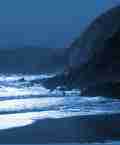 |
Search the site:

|
Yew Taxus baccata Iur Native (Evergreen) Almost every old churchyard in Ireland has a yew tree. Even in pre-Christian Ireland the yew was associated with religious sites. Yew wood has long been prized for its durability and is decorative for cabinet-making. The oldest human tool ever found in Europe is a spear made of yew wood lodged in the ribs of a straight-tusked palaeolithic elephant in Lower Saxony. The best bows were also made of yew wood. Yew grows to be a large spreading tree or shrub up to twenty five metres tall with reddish peeling or flaking bark. Its leaves are dark green on top with two pale stripes underneath. They are flat, long and narrow, ten to forty millimetres in length, and although they are attached almost spirally to their shoots they appear to be in a row on each side of the shoot. Yew fruits consist of a seed about six millimetres in length surrounded by a scarlet cup-shaped fleshy coat called an aril. Although the seeds themselves are known to be poisonous, the aril is not.
The yew is rare in the wild and occurs mainly in woods and rocky places and cliffs in the west, especially the Burren and Kerry and in the north.
|
[ Back to Top ]
All Material © 1999-2004 Irelandseye.com and contributors
